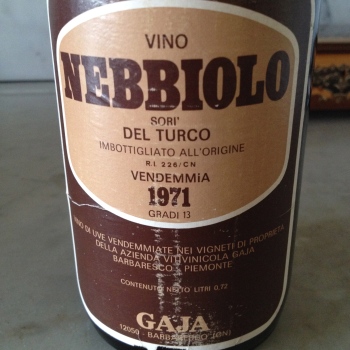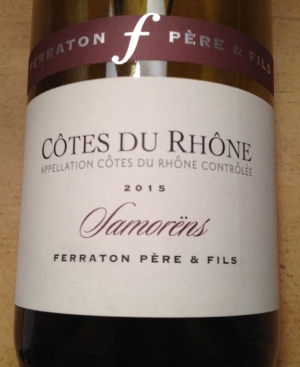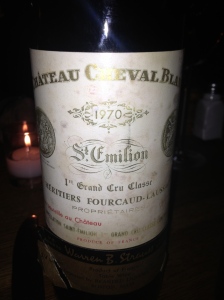Fines Bulles of the Loire Valley
An invitation for lunch and a tasting of 12 sparkling wines from the Loire Valley at Bouley in New York City seemed like a perfect opportunity to experience these very interesting wines. Bouley Restaurant is one of my favorites and though I had visited the Loire Valley only once, I enjoyed my stay there and liked the sparkling wines.
The speaker was Christy Canterbury M.W. She began by speaking about the Loire Valley and gave some background on the wines.
In 2002 the Fines Bulles (fine bubbles) was established for sparkling wine from Anjour-Samur-Touraine. The sparking wines here are made according to the Methode Traditionnelle. Like Champagne, the second fermentation takes place in the bottle. Christy said that this gives the finished wine a fine creamy mousse (foam) and texture that other sparkling wines cannot match

Christy Canterbury, M.W.
The Loire Valley is a UNESCO World Heritage Site and the third largest AOC vineyard in France. It is also the leading region for “fine bubbles.” The area extends from the Atlantic Ocean to the borders of Touraine along the Loire River, the longest river in France. It is one of the most northern wine regions in Europe. The terroir is the “tuffeau,” a soft porous, chalky (limestone) sub-soil. Christy pointed out that the limestone was used to build the region’s castles.
The main grape used in these sparkling wines is Chenin, but 11 others can be used, among them: Cabernet Franc, Chardonnay, Cabernet Sauvignon, Pineau d’ Aunis and Gamay.
The Loire Valley appellations that produce Fines Bulles include:
Vouvray: The appellation starts on the eastern edge of the city of Tours and includes 8 communes on the right bank of the Loire River and its tributary, La Brenne, covering 2,100 hectares. The vineyards cover stony slopes over a sub soil of tuffeau, punctuated by converging valleys made up of perruche (flinty clay) and aubius (clayey-limestone). Only Chenin Blanc can be used in the production of Vouvray Fines Bulles. Here Chenin Blanc is known as Pineau de Loire.
Christy said that the unique character of the wines comes from the limestone caves in which they are aged. They date from 60 to 90 million years ago. 
Cuvée Excellence, Vouvray Brut NV Caves des Producteurs de Vouvray C. Greffe. 100% Chenin Blanc. Method Traditionnelle. This is the largest co-op in the region. The wine has hints of white flowers, citrus and a touch of baked apple. $20
Vouvray Méthode Traditionnelle Brut 2011 Domaine Sylvain Gaudron 100% Chenin Blanc. This is a third generation family run winery. Citrus aromas and flavors with hints of honey and a touch of candied fruits. $18
La Dilettante, Vouvray Pètillant, NV Catherine and Pierre Breton. 100% Chenin Blanc Méthod Traditionelle. This is an organic and bio-dynamic winery. The wine is fermented with indigenous yeasts present on the grape skins. Additional sulfur is kept to a bare minimum. They believe that the wine should be a true expression of the terroir. It has hints of citrus and pears with a touch of brioche. $20
Saumur Brut: Christy said that there is a gentle climate here, and the appellation covers 1,400 hectares, which lie south of the Loire on verdant slopes reaching right up to the town of Saumur. The characteristic element of the sub-soil is the tuffeau, the porous limestone that leaves its mark on the wines. Christy added that here the wine is bottled with the addition of a mix of sugar, wine and select yeasts. After the wine is disgorged a little sugar solution is added and the bottle is recorked and labeled. Christy said that the sugar is added to balance the natural acidity in the wines.
Saumur Brut, NV Domaine du Vieux Pressoir made from 70% Chenin Blanc and 30% Chardonnay. Method Traditionelle and each varietal is vinified separately at very cool temperatures. The wine is left in bottles for 15 months on the lees before disgorging. This is a complex wine with good acidity and hints of white fruit and mint. $2o 
Bulles de Roches, Saumur, Mousseux, NV Thierry Germain & Michele Chèvre Made from 90% Chenin Blanc, 5% Chardonnay and 5% Cabernet Franc and they are hand harvested. Methode Traditionelle with dosage zero. This is a dry sparkling wine, with good citrus aromas and flavors, nice minerality and a touch of baked bread. It goes very well with food. $19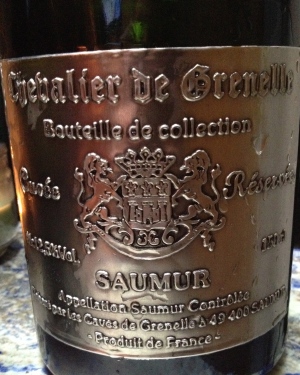
Chevalier de Grenele, Saumur Mousseux, NV in magnum. Caves Louis de Grenelle. Chenin Blanc, Chardonnay and Cabernet Franc with 9 months aging on the lees.
Christy said that under the streets of the Loire Valley town of Saumur, miles and miles of chalk caves meander. Carved centuries ago, many were dug with prison labor under the direction of the king of France. There are so many streets underground that they actually outnumber the streets above ground. Two and a half kilometers of underground caves belong to the Cave of Louis de Grenelle, the last remaining family-owned property of the major Saumur sparkling producers. All of the bottles produced by the cave are stocked here, under the city, and left to age for several years.
Louis de Grenelle has been producing wines in this location since 1859. It has hints of hazelnuts, mint and a touch of licorice. At $38 for the magnum, it is a great buy and one of my favorites at the tasting.
Touraine: This is a large appellation with almost 4,500 hectares from the gates of the Sologne region to the edges of Anjou. It is spread over two administration regions along the Cher and Loire Rivers. 85% of the appellation’s surface area is southeast of the city of Tours on the slopes high above the Cher.
The sub-soil is tuffeau from the Paris Basin with clay limestone soils. The terraces along the banks of the Loire are composed of sand and gravel. The banks of the Cher are made up of flinty clay and flinty sand.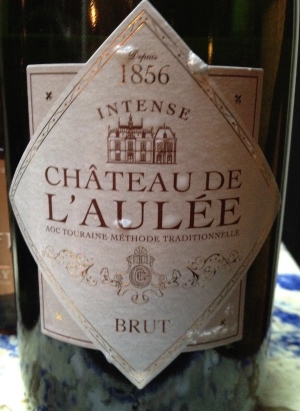
Intense Brut, Touraine Brut, NV Chäteau de L’Aulée 80% Chenin Blanc and 20% Chardonnay. The Chenin vines are 10 to 40 years old. Guyot pruning is used in the vineyards, with natural or controlled grass growing in the dividing rows according to the need. Some of the grapes come from the so-called Joan of Arc vineyard, where she is said to have rested on her was to meet the future king Charles VII. This is a wine with hints of lime, pear and baked apple. $17
Touraine Rosé, Brut, NV Jean-Michele Gautier made from the Grolleau grape. Methode Traditionnelle. Family owned and managed since 1669. The farming is traditional organic without the use of chemicals or pesticides. Traditional wine making with very little interference in the winery. The owner/winemaker, Jean Michael, prefers the wines to display the terroir. Fermentation is at low temperature in stainless steel tanks for 6 months before bottling. This was another one of my favorites and a great food wine.$20
Cuveé JM Brut, Touraine Brut, NV Monmousseau Made from 100% Chenin Blanc, Method Traditionnelle. The wine spends 24 to 36 months on the lees. The same family has owned the property since 1886. It has hints of apple, honey, and hazelnut and good acidity. $18
Crémant De Loire: The vineyards stretch out for over 250 kilometers from east to west. In the east there is the terres blanches (white soil) and in the west the terres noires (black soil).
Crémant de Loire NV Chäteau de Brézé made from 60% Chenin and 40% Chardonnay. The vineyards are being converted to organic and then to biodynamic farming. Traditionelle brut method is used. It has citrus aromas and flavors with a hint of molasses. $20
Cuvée Flamme, Crémant de Loire Brut NV Gratien & Meyer, 60% Chardonnay, 25% Cabenet Franc and 15% Chenin Blanc. Wine is aged in their cellars for more than 2 years. It has nice fruit aromas and flavors with a hint of almonds and a touch of licorice. $18
Crémant de Loire Brut Rosé, NV Deligeroy made mostly from Cabernet Franc. The vines are 20 to 30 years old. It has nice strawberry and cherry aromas and flavors and a hint of peach. $16
I found the wines went very well with the food and most are priced at $20 or less which makes them a very good buy.















